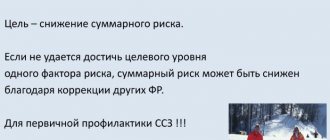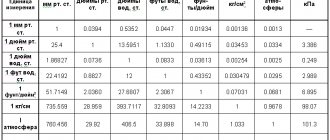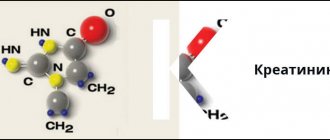Glomerular filtration rate. Online calculator
Glomerular filtration rate (GFR) is the amount of blood cleared by the kidneys over a certain period of time. GFR is the main indicator for assessing renal function and the stage of renal failure.
Calculation of GFROnline calculator for calculating glomerular filtration ratehttps://medsoftpro.ru//images/Calcs/renum.png Assessment of kidney function and stage of renal failureNephrology
N48ICD-10
Glomerular filtration rate calculator
Incorrect data
Incorrect data
Incorrect data
Incorrect data
* The data obtained cannot be interpreted as professional medical advice and is provided for informational purposes only
The rate of glomerular filtration is determined by the rate of blood purification (clearance) of certain substances excreted by the kidneys that are not secreted and reabsorbed in the tubules (most often creatinine, inulin, urea).
Considering that this is a rather labor-intensive method, in clinical practice GFR is calculated using special formulas based on the concentration of creatinine in the blood and some anatomical and physiological indicators (height, weight, age). The use of special calculators makes the calculation easier. The main methods used are the Cockcroft-Gault formula, MDRD and the CKD-EPI equation. To calculate GFR in children, the Schwartz and Cunnaghan-Barratt formula is used.
The values of glomerular filtration rate obtained using the formulas quite accurately coincide with the values obtained when using reference methods for estimating GFR.
The Cockroft-Gault formula was the first formula developed to estimate creatinine clearance. Among the disadvantages of the formula, one can highlight its inaccuracy with normal or slightly reduced GFR values.
([140 – age (years)] * body weight (kg) * [10.05 (women) or 10.23 (men)]) / plasma creatinine (µmol/l)
The MDRD formula is more modern and is now widely used, but also has its disadvantages, in particular it underestimates GFR at its high levels.
32788 * [plasma creatinine (µmol/l)]–1.154 * age–0.203 * 0.742 (for women)
The CKD-EPI equation tends to provide a more accurate estimate when GFR is >60 mL/min/1.73 m2.
| Floor | Blood creatinine, mg/100 ml | Formula |
| Female | ≤ 0.7 | 144*(0.993) age * creatinine/0.7)-0.328 |
| Female | > 0.7 | 144*(0.993) age * creatinine/0.7)-1.21 |
| Male | ≤ 0.9 | 141*(0.993) age * creatinine/0.9)-0.412 |
| Male | > 0.9 | 141*(0.993) age * creatinine/0.9)-1.21 |
Classification of CKD by stages
| Stage | Description | GFR, ml/min/1.73 m² |
| 1 | Signs of nephropathy, normal GFR | > 90 |
| 2 | Signs of nephropathy, slight decrease in GFR | 60 – 89 |
| 3A | Moderate decrease in GFR | 45 – 59 |
| 3B | Marked decrease in GFR | 30 – 44 |
| 4 | Severe decline in GFR | 15 – 29 |
| 5 | End-stage chronic renal failure | < 15 |
More calculators: GFR calculator for children, KIN calculator
Methodological basis for assessing glomerular filtration rate in urological practice
MM. Batyushin
1FGBOU HE "Rostov State Medical University" of the Ministry of Health of Russia; Rostov-on-Don, Russia
Contact author: Batyushin Mikhail Mikhailovich Tel.; e-mail
Introduction
In the last decade, scientific works have increasingly begun to analyze the state of renal function in patients who have undergone various urological interventions. This was facilitated by the unification of approaches to assessing renal function, which was based on the American recommendations KDOQI (National Kidney Foundation–Kidney Disease Outcomes Quality Initiative 2002) [1], which were subsequently adapted into the international recommendations KDIGO (Kidney Disease: Improving Global Outcomes, 2012) [2]. National recommendations have also appeared [3], defining the need to introduce the assessment of glomerular filtration rate (GFR) into widespread clinical practice. At the same time, assessments of partial renal abilities, which are used for scientific purposes, as well as clinical purposes when examining patients with hereditary tubular dysfunctions, have not lost their relevance. In recent years, two issues have come into focus. Firstly, which method of determining GFR is preferable, taking into account the different information content of the registration methods used. Secondly, what is the significance of assessing GFR for the outcome of urological intervention and the patient’s long-term life expectancy.
Methods for estimating GFR
KDOQI (2002) was the first to indicate that in case of kidney pathology it is necessary to evaluate GFR, and also noted that determination of creatinine level cannot be used to assess the severity of renal dysfunction [1]. These guidelines also recommend using the MDRD formula to calculate GFR in adults and the Schwartz and Counahan-Barratt formula in children. It was recommended to use the inulin clearance method as the “gold standard”. Unfortunately, this method has not found its wide application in clinical practice, primarily due to the high cost of inulin itself and the need not only for its availability, but also for the introduction of a method for assessing it in blood and urine. The method of calculating GFR according to MDRD is also not widely used for reasons that will be discussed below, as well as the Counahan-Barratt method. However, these recommendations were revolutionary in their time, since for the first time they gave final priority to glomerular filtration disorders over tubular dysfunction in assessing the level of renal dysfunction and introduced an individual assessment of renal dysfunction taking into account the patient’s body surface area. As an alternative method for assessing GFR, these recommendations provide the methods of renoscintigraphy with 125I-iothalamate and 99mTc-DTPA, which currently not only have not lost their significance, but are also the “gold standard” for the accuracy of determining GFR. The use of these methods is limited mainly by the need for the availability and equipment of a radionuclide laboratory.
Calculation using the MDRD formula has a number of advantages over using the Cockcroft-Gault formula. Specifically, the MDRD study correlated estimated GFR with 125I-iothalamate GFR and included white Americans. Also, the calculation using the Cockcroft-Gault formula did not include body surface area, but was based on body weight, which also added inaccuracy to the calculation, since the volume of creatinine generated in the human body largely correlates with body surface area.
The Schwartz and Counahan-Barratt formulas are similar in accuracy in estimating GFR in children. Specifically, the Schwartz formula provided 75% agreement with the GFR value determined using inulin clearance [4], whereas the Counahan-Barratt formula provided 70 to 86% agreement with the value determined using Cr-EDTA. However, the Schwartz formula has nevertheless found wider use in pediatric practice.
Another important achievement of the KDOQI recommendations (2002) was the statement that the assessment of 24-day creatinine clearance has no advantage over short-term creatinine clearance in analyzing the prognosis of patients with chronic renal failure. The culmination of these recommendations was the introduction of the term “chronic kidney disease” (CKD) and the ranking into five stages depending on the level of GFR, which, after some changes, is still used today.
The KDIGO recommendations suggest dividing the third stage of CKD into stages 3A and 3B, the division between them being a GFR value of 45 ml/min/1.73 m2. There are also three stages of albuminuria, which is sometimes the only sign of kidney damage. With an increase in the severity of albuminuria and the stage of CKD, the risk of patient death and initiation of renal replacement therapy increases. The division of the third stage into 3A and 3B was due to the results of a meta-analysis of 14 studies, which included 105,872 patients [6]. It has been shown that the maximum rate of increase in cardiovascular mortality in patients with CKD is observed when GFR is from 75 to 45, and subsequently, as renal function decreases, the rate slows down significantly (Fig. 1).
The KDIGO recommendations, in addition to the creatinine-based GFR calculation method, suggest the use of cystatin C-based GFR calculation or clearance-based GFR estimation in cases where this type of estimation is not very accurate.
The KDIGO recommendations rank in detail the situations in which errors in the determination of GFR occur (Table 1). These situations may introduce inaccuracy into the calculation of GFR based on creatinine. In particular, determination of GFR in patients with acute kidney injury (AKI) is currently discouraged. In such patients, the values of creatinine and the rate of its change are assessed, as well as indicators of water-electrolyte and acid-base balance, some clinical data (hourly diuresis, phenomena of uremic encephalopathy, etc.). Data from the populations of those countries in which studies assessing GFR were conducted are extrapolated to those countries in which such studies were not conducted, unfortunately, without taking into account population characteristics. In this case, the estimate of GFR will probably not be entirely accurate. Also, inaccuracies arise when assessing GFR both in patients with a high level of muscle mass development (athletes, bodybuilders, sportsmen) and in patients with a significantly reduced level of muscle mass (patients with amputated limbs, with severe myodystrophic syndromes). It should be recognized that a method for calculating GFR has not yet been developed for this category of patients.
Figure 1. RR and 95% for all deaths and cardiovascular mortality by GFR and ACI (albumin-creatinine index), adjusted for age, sex, race, history of cardiovascular disease, systolic blood pressure, diabetes, smoking , total cholesterol. The reference values were GFR95 ml/min/1.73m2 and ACI5 mg/g (0.6 mg/mmol), respectively.
Table 1. Sources of error in creatinine-based estimates of GFR
| Source of error | Example |
| Unstable state | Acute kidney injury |
| Non-GFR determinants showing differences in the study population | |
| Factors affecting creatinine production | Race/ethnicity other than American, European Extremes of muscle mass Extremes of body weight Diet and nutritional status:
Muscular wasting diseases Eating cooked meat |
| Factors affecting tubular secretion | Drug-induced reduction:
|
| Factors affecting extrarenal creatinine elimination | Dialysis Inhibition of intestinal creatininase with antibiotics Increased by high-volume extracellular fluid losses |
| Increased GFR | Increased biological variability in non-GFR determinants in relation to GFR |
| Interference with creatinine analysis | Spectral interventions (including bilirubin, some drugs) Chemical interventions (including glucose, ketone bodies, bilirubin, some drugs) |
The KDIGO recommendations rank in detail the situations in which errors in the determination of GFR occur (Table 1). These situations may introduce inaccuracy into the calculation of GFR based on creatinine. In particular, measuring GFR in patients with acute kidney injury (AKI) is currently discouraged. In such patients, the values of creatinine and the rate of its change are assessed, as well as indicators of water-electrolyte and acid-base balance, some clinical data (hourly diuresis, phenomena of uremic encephalopathy, etc.). Data from the populations of those countries in which studies assessing GFR were conducted are extrapolated to those countries in which such studies were not conducted, unfortunately, without taking into account population characteristics. In this case, the estimate of GFR will probably not be entirely accurate. Also, inaccuracies arise when assessing GFR both in patients with a high level of muscle mass development (athletes, bodybuilders, sportsmen) and in patients with a significantly reduced level of muscle mass (patients with amputated limbs, with severe myodystrophic syndromes). It should be recognized that a method for calculating GFR has not yet been developed for this category of patients.
The KDIGO guidelines state that the Cockcroft-Gault formula was developed and studied before the introduction of standardized methods for determining blood creatinine, and after the introduction of such methods it was not re-evaluated, which puts its validation into question. Due to the ease of calculation, the use of this formula is probably possible in conditions where it is not possible to use other calculation methods (nephrological rulers, calculators, nomograms, formulas). The application of the MDRD formula will not have a better fate either. This is due to the fact that this formula overestimates the GFR values; it is allowed to be used only for GFR values greater than 60 ml/min/1.73 m2; however, even for GFR values above 90 ml/min/1.73 m2, its use is not recommended due to lack of an appropriate research base. On this point, KDIGO experts point to the National Kidney Disease Education Program (NKDEP), conducted in England, which demonstrated the limitations of the MDRD formula. Thus, the only currently recommended method for calculating GFR is the CKD-EPI formula, which has minimal differences from the GFR measured by the “golden method”. As an example of a comparative analysis of two formulas, we can cite the results of a study by Levey AS et al. [7] (Fig. 2). In Fig. 2 shows that the deviation of the GFR curve according to the MDRD formula is significantly greater than the deviation of the GFR curve according to CKD-EPI.
Mentioned above was the possibility of determining GFR using cystatin C. KDIGO experts recommend its use in the situations described in table. 1, in the case of GFR 45-60 ml/min/1.73 m2, but in the absence of any markers of renal pathology, as well as in other situations as an alternative to complement the calculation of GFR by creatinine using the CKD-EPI formula. However, calculating GFR based on cystatin C also has its limitations regarding population differences, thyroid dysfunction, corticosteroid use, the presence of heterophilic antibodies to cystatin C, etc. All this, along with the high cost of this method (about 2000 rubles per study), did not lead to the dissemination of this method in widespread clinical practice within four years from the date of publication of the recommendations.
Determination of GFR by creatinine clearance is included as a mandatory method for assessing GFR in national standards for providing specialized care to nephrology patients, however, this probably appears to be a technical error, since at the time the standards were prepared, the Reberg-Tareev test was already inferior to calculation methods based on international recommendations. Moreover, at that time Russian recommendations had already come into force, which also proclaimed the advantages of calculation methods for estimating GFR over clearance methods.
In the national recommendations of six Russian societies, incl. Society of Cardiology and Nephrology (2013) provides special clinical situations as indications for assessing 24-hour creatinine clearance (Reberg-Tareev test) [8]:
- pregnancy,
- extremes of age and body size,
- severe protein-energy malnutrition,
- skeletal muscle diseases, paraplegia and tetraplegia,
- vegetarian diet,
- rapidly changing kidney function
- assessment of renal function before prescribing nephrotoxic drugs.
The presence of secretion of a part of plasma creatinine in addition to filtration, as well as an increase in the accuracy of the test as a high volume of diuresis is maintained, the dependence of the test results on many external and internal factors makes this test a less priority in assessing GFR.
In general, summarizing the above, KDIGO experts summarized the disadvantages and advantages of various methods in a summary table. 2 [2].
Figure 2. Quality of CKD-EPI and MDRD formulas in estimating GFR in external validation.
Table 2. Strengths and limitations of GFR assessment methods and markers
| Approaches | Strengths | Restrictions |
| 1 | 2 | 3 |
| Methods | ||
| Urinary clearance | ||
| Urinary catheter and continuous intravenous marker infusion | "Gold standard" | Invasive |
| Spontaneous urination | Comfortable for the patient Less invasive | Possible incomplete emptying of the bladder, low frequency of urination in people with low GFR |
| Bolus marker injection | Short duration | Rapid decrease in plasma concentration with high GFR, long equilibration time with increasing extracellular volume |
| 24-hour urine collection | Cumbersome, prone to errors | |
| Plasma clearance | No urine collection required, potentially high accuracy | Overestimation of GFR with increasing extracellular volume, inaccurate levels with a single determination especially at low GFR, long duration of plasma preparation at low GFR |
| Nuclear tomography | No urine collection or repeated blood draws, relatively short duration | Less accurate |
| Markers | ||
| Inulin | "Gold standard", no side effects | Expensive, difficult to dissolve and maintain in dissolved form, short stay in the blood |
| Creatinine | Endogenous marker, no need for administration, the technique is used in all clinical laboratories | Secretion varies greatly between individuals |
| Yothalamat | Inexpensive, long half-life | Tubular secretion is possible, requirements for the storage and use of radioactive substances when using 125I as a label, the use of non-radioactive iothalamate requires expensive support, cannot be used in patients with an allergy to iodine |
| Iohexol | Non-radioactive, inexpensive, the sensitivity of the method allows you to determine small doses | Possible tubular reabsorption or protein binding, low doses require expensive follow-up, cannot be used in patients with iodine allergy, nephrotoxicity and risk of allergic reactions to high doses |
| EDTA* | Widely available in Europe | Possible tubular reabsorption, requirements for storage and use of radioactive substances when using 51Cr as a label |
| DTPA** | Widely available in the US | Requirements for the storage and use of radioactive substances when using 99mTc as a tracer The need for standardization for 99mTc, dissociation and binding to the 99mTc protein, the risk of nephrogenic systemic fibrosis when gadolinium is used as a tag |
Note: *EDTA—ethylenediamine tetraacetic acid; **DTPA—diethylenetriamine pentaacetic acid.
Russian nephrological recommendations [3] are fully consistent with the KDIGO recommendations in terms of assessing the significance of certain methods for determining GFR.
When analyzing the recommendations developed by the Russian Society of Urology [9], the need to determine GFR in the sections devoted to hydronephrosis and ureterohydronephrosis, acute and chronic renal failure, chronic pyelonephritis was noted, and for kidney cancer only determination of creatinine and blood urea is recommended. At the same time, the method for determining GFR is indicated only in two cases and this is the Rehberg test. When analyzing the recommendations of the European Association of Urology [10], the need to determine GFR for those urological diseases that somehow affect the renal parenchyma is also indicated, but the determination method is not specified. And only the recommendations of the American Urological Association [11] indicate the need to use calculation methods for assessing GFR and classifying CKD, which determines the priority of calculation methods over clearance methods in real urological practice, but there are no instructions on the use of a specific calculation method.
At the same time, in recent years, more and more clinical studies have been conducted in which GFR is increasingly used as the basis for assessing the outcomes and survival of urological patients [12-18]. This is explained, first of all, by the development of urological technologies, increased survival of patients and the opportunities that have emerged in connection with this to prolong life through the use of a resource associated not with the quality of urological manipulation, but with the impact on renal, cardiovascular, endocrine and metabolic risk factors. Based on this, it should be stated that in urological practice there is an urgent issue of standardization of approaches to assessing renal function and the choice of a more accurate method will allow a correct assessment of the clinical situation.
The nephrological approaches outlined above can be used as a methodological basis for assessing GFR in urological practice. In particular, it should be recommended to determine serum creatinine and calculate GFR using the CKD-EPI formula in most cases; in rare situations, use clearance methods, incl. radionuclide.
Categories of patients with urological pathology who should have their GFR assessed:
- patients suffering from chronic or acute pyelonephritis;
- patients with unilateral or bilateral nephrosclerosis;
- patients with congenital or acquired hydronephrosis, incl. and due to bladder outlet obstruction;
- patients with kidney cancer;
- patients with reflux nephropathy;
- patients with urolithiasis;
- patients with installed nephrostomy, cystostomy;
- patients with multiple kidney cysts or large cysts;
- patients with nephrocalcinosis of various origins.
This applies to clinical situations both before and after the provision of urological care. And, of course, this applies to the development of chronic renal failure due to urological pathology or in association with it.
It is also important to monitor blood creatinine and GFR in patients receiving nephrotoxic drugs. In urological practice, these may be antibiotics of the aminoglycoside group (amikacin, gentamicin), tetracycline (doxycycline), fluoroquinolone antibacterial drugs (sparfloxacin) used for urinary tract infections, non-steroidal anti-inflammatory drugs and analgesics used for pelvic pain syndrome, renal colic [19 ].
In case of acute renal failure (acute kidney injury), in accordance with Russian and international recommendations, it analyzes minute urine output and blood creatinine without determining GFR.
For ease of calculations, you can use a nomogram (Fig. 3), or nephrological rulers, or Internet calculators.
Figure 3. Nomogram for calculating GFR using CKD-EPI
Figure 4. Screenshot of the calculator screen for calculating GFR according to CKD-EPI for i-Phone
The medical calculator can be installed on the doctor's or patient's phone. In offline mode, it is possible to carry out the necessary calculations within a few seconds. An example of such a calculator is shown in Fig. 4.
Among the Internet links to calculators for calculating GFR according to CKD-EPI, the most popular Russified ones are the following:
- https://www.okhotin.net/calcs/ckd-epi.html
- https://medsoftpro.ru/index.php?Itemid=184
- https://www.cardioneurology.ru/skf/
- https://boris.bikbov.ru/2013/07/21/kalkulyator-skf-rascheta-skorosti-klubochkovoy-filtratsii/
- https://gormonoff.com/tools/raschet-skorosti-klubochkovoj-filtracii
Conclusion
Currently, a methodological basis has been formed for a unified approach to assessing renal function in patients with urological pathology. Estimation of GFR is a welcome first choice for renal function testing. For convenience and the formation of a universal approach, it is recommended in widespread practice to use calculation methods for determining GFR, among which the CKD-EPI formula is considered the most accurate. The use of radioisotope clearance techniques remains the “gold standard”, however, the technical difficulties and high cost of their implementation leave only certain niches for them in the form of clinical situations in which a more accurate assessment of renal function is required.
The study had no sponsorship. The author declares no conflict of interest.
Literature
1. National Kidney Foundation. K/DOQI clinical practice guidelines for chronic kidney disease: evaluation, classification, and stratification. Am J Kidney Dis. 2002;39(suppl 2):1-266. 2. KDIGO 2012 Clinical Practice Guidelines for the Evaluation and Management of Chronic Kidney Disease. Kidney Int.2013;3(1):1-163. 3. National recommendations. Chronic kidney disease: basic principles of screening, diagnosis, prevention and treatment approaches. Saint Petersburg. Lefty. 2012:51. 4. Stake G. Estimation of the glomerular filtration rate in infants and children using iohexol and X-ray fluorescence technique, in Department of Radiology, Section of Paediatric Radiology. Oslo: Norway. University of Oslo; 1992. 5. Inker LA, Astor BC, Fox CH, Isakova T, Lash JP et al. KDOQI US Commentary on the 2012 KDIGO Clinical Practice Guideline for the Evaluation and Management of CKD. Am J Kidney Dis. 2014;63(5):713-735. doi: 10.1053/j.ajkd.2014.01.416. 6. Chronic Kidney Disease Prognosis Consortium, Matsushita K, van der Velde M, Astor BC, Woodward M et al. Association of estimated glomerular filtration rate and albuminuria with all-cause and cardiovascular mortality in general population cohorts: a collaborative meta-analysis. Lancet.2010;375(9731):2073-81. doi: 10.1016/S0140-6736(10)60674-5. 7. Levey AS, Stevens LA, Schmid CH, Zhang YL, Castro AF 3rd et al. A new equation to estimate glomerular filtration rate. Ann Intern Med.2009;150(9):604-612. 8. Cardiovascular risk and chronic kidney disease: strategies for cardio-nephroprotection. Clinical recommendations RKO, NONR, RAE, RMOAG, NOA, RNMOT. Russian Journal of Cardiology. 2014;8(112):737. 9. Russian clinical recommendations. Urology. Under. ed. Alyaeva Yu.G., Glybochko P.V., Pushkarya D.Yu. Moscow: Geoter-Media; 2021. 10. European Association of Urology (EAU). 01/23/2017. Guidelines. Available from: https://uroweb.org/individual-guidelines/non-oncology-guidelines/. The link is active as of 12/12/2016. 11. American Urological Association (AUA). Guidelines. 01/23/2017. Available from: https://www.auanet.org/education/clinical-practice-guidelines.cfm. The link is active as of 01/24/2017. 12. Dong W, Zhang Z, Zhao J, Wu J, Suk-Ouichai C et al. Excised Parenchymal Mass During Partial Nephrectomy: Functional Implications. Urology. 2016:S0090-4295(16)30966-9. doi: 10.1016/j.urology.2016.12.021. 13. Song W, Sung HH, Han DH, Jeong BC, Seo SI et al. Song The effect of contralateral kidney volume on renal function aŌer radical nephroureterectomy: Implications for eligibility for neoadjuvant chemotherapy for upper tract urothelial cancer. Urol Oncol. 2016:1078(16)3036330365. doi: 10.1016/j.urolonc.2016.10.022. 14. Momtaz HE, Dehghan A, Karimian M. Correlation of cystatin C and creatinine based estimates of renal function in children with hydronephrosis. J Renal Inj Prev. 2016;5(1):25-28. doi: 10.15171/jrip.2016.06. 15. Hoarau N, Martin F, Lebdai S, Chautard D, Culty T et al. Impact of retrograde flexible ureteroscopy and intracorporeal lithotripsy on kidney functional outcomes. Int Braz J Urol.2015;41(5):920-926. doi: 10.1590/S16775538.IBJU.2014.0402. 16. Evseev S.V., Gusev A.A. The importance of renal function in renal cell carcinoma. Journal of Urology. 2013;(3):39-53. 17. Maslyakova G.N., Rossolovsky A.N., Napsheva A.M., Zakharova N.B. Methods for assessing tubulointerstitial changes during surgical treatment of patients with urolithiasis. Journal of Urology. 2014;(1):3-10. 18. Batyushin M.M. Mechanisms of damage to the renal parenchyma during reflux nephropathy. Review. Journal of Urology. 2013;(2):43-51. 19. Matsionis A.E., Batyushin M.M., Povilaityte P.E., Dmitrieva O.V. Terentyev V.P. Clinical and morphological analysis of drug-induced kidney damage during therapy with non-steroidal anti-inflammatory drugs. Nephrology and dialysis. 2009;11(1):44-49.
Magazine
Bulletin of Urology No. 1 2017
Comments
To post comments you must log in or register
Table of norms and interpretation of the received data
| Stage of chronic kidney disease | Description | GFR value (ml/min/1.73 sq.m.) | Recommendations |
| 1 | Kidney dysfunction with normal or increased GFR | ≥90 | Observation by a nephrologist, diagnosis and elimination of concomitant diseases, reducing the risk of developing complications from the cardiovascular system. |
| 2 | Impaired kidney function with a slight decrease in GFR | 60-89 | Research and elimination of kidney pathologies, predicting the development of complications |
| 3 | Average degree of GFR decline | 30-59 | Elimination of nephrological diseases, prevention of possible complications |
| 4 | Marked decrease in GFR | 15-29 | It is recommended to select a method and prepare for replacement therapy |
| 5 | Acute renal failure | ≤15 | Replacement therapy indicated |
Some features of GFR analysis
Because creatinine is released by muscles, external or internal conditions that affect the muscles will also affect GFR. People with muscle disease, obesity , amputations, or paralysis require alternative ways to determine glomerular filtration rate. Also, more accurate analysis is needed for young people (under 18 years of age) and pregnant women, as they experience changes in muscle mass, which can lead to an underestimation of GFR. []
To solve this problem, new formulas have been developed that link GFR to another marker of kidney function, cystatin C. Unlike creatinine, cystatin C can be found in almost all tissues of our body. Many studies have shown that the level of cystatin C in the blood is a more accurate indicator of kidney function than the level of creatinine. In addition, some formulas include cystatin C and creatinine, and this is the most accurate test of glomerular filtration rate to date. [, , , ]
Finally, there are special equations for calculating GFR in children that take into account the child's height. []
What is GFR calculation used for?
When a disease occurs, nephrons fail faster than new ones can be formed, therefore, the kidneys cope less well with their cleansing function. In order to assess how much this indicator differs from normal values, glomerular filtration rate analysis or the Rehberg-Tareev test is used.
It is one of the main diagnostic methods that allows you to assess the filtration capacity of the kidney. With its help, you can calculate the volume of glomerular ultrafiltrate that is formed in a certain unit of time.
The results of this analysis are combined with the rate of purification of blood serum from the protein breakdown product - creatinine, and an assessment of the filtration abilities of the kidneys is obtained.
Glomerular filtration rate depends on the following factors:
- the amount of plasma that enters the kidneys. Normally this is 600 ml per minute in an adult;
- pressure at which filtration occurs;
- filtered surface area.
Glomerular filtration rate as a way to assess kidney health
Laboratory diagnostics doctor (head of clinical diagnostic laboratory) Lavitskaya T.V.
The kidney consists of a million units - nephrons, which are a glomerulus of blood vessels and tubules for the passage of fluid. Nephrons remove waste products from the blood through urine. Up to 120 liters of liquid pass through them per day. Purified water is absorbed into the blood to carry out metabolic processes. Harmful substances are eliminated from the body in the form of concentrated urine. From the capillary, under the pressure generated by the work of the heart, liquid plasma is pushed into the glomerular capsule. Protein and other large molecules remain in the capillaries. If the kidneys are sick, nephrons die, and new ones are not formed, the kidneys do not perform their cleansing mission well. Due to increased stress, healthy nephrons fail at an accelerated rate.
Methods to assess kidney function
To do this, the patient’s daily urine is collected and the creatinine content in the blood is calculated. Creatinine is a protein breakdown product. Comparison of indicators with reference values shows how well the kidneys cope with the function of cleansing the blood of waste products. To find out the condition of the kidneys, another indicator is used - the glomerular filtration rate (GFR) of fluid through the nephrons, which in the normal state is 80-120 ml/min. With age, metabolic processes slow down and so does GFR.
The fluid is filtered through a glomerular filter. It consists of capillaries, basement membrane and capsule.
Water and dissolved substances enter through the capillary indothelium, or more precisely, through its openings. The basement membrane prevents proteins from entering the kidney fluid. Filtration quickly wears out the membrane. Its cells are constantly renewed.
The purified liquid enters the capsule cavity through the basement membrane. The sorption process is carried out due to the negative charge of the filter and pressure. Under pressure, fluid with the substances it contains moves from the blood into the glomerular capsule. GFR is the main indicator of kidney function, and therefore their condition. It shows the volume of primary urine formation per unit of time. The glomerular filtration rate depends on: the amount of plasma entering the kidneys. The norm for this indicator is 600 ml per minute in a healthy person of average build; filtration pressure; filter surface area. In normal conditions, GFR is at a constant level.
Calculation of glomerular filtration rate is possible using several methods and formulas. The determination process comes down to comparing the content of the control substance in the patient’s plasma and urine.
Normal GFR indicators indicate the performance of nephrons and the general condition of the kidneys.
The normal glomerular filtration rate of the kidneys is 125 ml/min in men, and 11o ml/min in women.
In 24 hours, up to 180 liters of primary urine passes through the nephrons. In 30 minutes the entire volume of plasma is cleared. That is, in 1 day the blood is completely cleansed by the kidneys 60 times. With age, the ability to intensively filter blood in the kidneys slows down. Help in diagnosing diseases GFR allows one to judge the condition of the nephron glomeruli - the capillaries through which plasma enters for purification. Kidney damage.
For clinical studies, measurements are made using creatinine clearance. Its formation and removal are constant and are directly dependent on the volume of muscle mass in the body. In men who lead an active life, creatinine production is higher than in children and women.
This substance is mainly eliminated by glomerular filtration. But 5-10% of it passes through the proximal tubules. Therefore, there is some error in the indicators. As filtration slows down, the content of the substance increases sharply. Compared to GFR, it is up to 70%. These are signs of kidney failure.
The picture of indications can be distorted by the content of drugs in the blood. Nevertheless, creatinine clearance is a more accessible and generally accepted analysis.
All daily urine is taken for research, with the exception of the first morning portion. The content of the substance in the urine in men should be 18-21 mg/kg, in women – 3 units less. Lower readings indicate kidney disease or improper urine collection.
The simplest way to assess kidney function is to measure serum creatinine levels. The higher this indicator, the lower the GFR. That is, the higher the filtration rate, the lower the creatinine content in the urine. A glomerular filtration test is done if renal failure is suspected.
What diseases can be identified?.
GFR can help diagnose various forms of kidney disease. If decreases, this may be a signal for the manifestation of a chronic form of insufficiency. At the same time, the concentration of urea and creatinine in the urine increases. The kidneys do not have time to cleanse the blood of harmful substances. In pyelonephritis, the nephron tubules are affected. The decrease in glomerular filtration rate occurs later. The Zimnitsky test will help determine this disease.
The amount of filtration increases in diabetes mellitus, hypertension, lupus erythematosus and some other diseases. A decrease in GFR occurs with pathological changes, with massive loss of nephrons. The cause may be low blood pressure, shock, or heart failure. Intracranial pressure rises with poor urine flow. Due to increased venous pressure in the kidney, the filtration process slows down.
If you have back pain or difficulty urinating, you should consult a specialist doctor - a urologist and nephrologist.
Progress of the study : In the morning, on an empty stomach, blood is taken from a vein to determine the level of creatinine in plasma. As already mentioned, it does not change during the day. In the first case, two hour-long portions of urine are collected, noting the time of diuresis in minutes. By calculating using the formula, two GFR values are obtained. The second option is to collect daily urine at intervals of 1 hour. You should get at least 1500 ml. In a healthy adult, creatinine clearance is 100-120 ml per minute.
The kidneys are the most important cleansing organ of our body. If their functioning is disrupted, many organs malfunction, the blood carries harmful substances, and partial poisoning of all tissues occurs. Therefore, at the slightest concern in the kidney area, you should get tested, consult a doctor, undergo the necessary examinations and begin timely treatment.
What formulas are used to calculate GFR?
In medicine, the value associated with creatinine clearance is most often used - this method is considered the simplest and most convenient for medical diagnosis. Since it is excreted through the glomeruli only by 85-90%, and the rest through the proximal tubules, calculations are carried out with an indication of the error.
The lower its value, the correspondingly higher the GFR rate. Direct measurement of insulin filtration rate is too expensive for medical diagnosis and is used mainly for scientific purposes.
The patient's blood and urine are used for the analysis. It is especially important to collect urine strictly within the allotted time period. Today there are 2 options for collecting material:
- Two hourly portions of urine are collected, and in each sample the minute diuresis and the concentration of the end product of protein breakdown are examined. The result is two GFR values.
- Less commonly used is the daily amount of urine, in which the average creatinine clearance is determined.
On a note! The situation with blood is simpler - in it the concentration of creatinine remains unchanged for a long time, so this sample is taken as standard - in the morning on an empty stomach.
Standard formula
(up x Vn) / (Ср x Т),
where Vn is the volume of urine over a fixed period of time, Cp is the concentration of creatinine in the blood serum, T is the time during which urine is collected in minutes.
Cockcroft-Gault formula
[(140 - (number of years) x (weight, kg)] / (72 x serum creatinine concentration, mg/dl)
The result of the calculation using this formula is true for an adult man; for women, the result must be multiplied by a coefficient of 0.85.
Criatinine clearance formula
[(9.8 - 0.8) x (age - 20)]/ serum creatinine concentration, mg/min
For women in this case, you also need to apply a coefficient of 0.9.
You can use one of the online calculators that will help you calculate your creatinine clearance. One of them can be found at this link.
Since GFR depends on the rate of clearance of creatinine from blood plasma, it is also calculated manually using the formula:
(urine creatinine concentration x urine volume over time)/(plasma creatinine concentration x urine collection time in minutes)
Factors that increase the risk of developing chronic kidney disease
- High blood pressure [, ]
- Diabetes mellitus type 1 and 2 [, ]
- Heart diseases []
- Obesity []
- Smoking [, ]
- Family history of kidney disease (genetics) []
- Age (60 years and above) []
- Previous kidney damage []
- Low birth weight [, ]
- Infections of the genitourinary system
- Increased blood cholesterol HDL below 40 mg/dL increase the risk of kidney disease by 2 times)
- Autoimmune diseases (eg, systemic lupus erythematosus)
- Staphylococcal infections (sore throats, pharyngitis)
- Sickle cell anemia
- Goodpasture's syndrome
- Hepatitis C
- Heart failure
- HIV
- Malignant tumors (development of paraneoplastic nephritis)
- Difficulty in urine flow
- Vesicoureteral (or vesicourethral) reflux is the reflux of urine from the bladder into the ureter.
- Worm infestations
- Gastrointestinal disorders (constipation, dysbacteriosis, malabsorption syndrome).
- Kidney tuberculosis
- Pyelonephritis
- Polycystic kidney disease
What diseases can be diagnosed
Analysis of the Reberg-Tareev test is used when various pathologies of the excretory system are suspected. If this figure is less than normal, this means massive death of nephrons. This process may indicate acute and chronic renal failure.
Since GFR can decrease not only due to damage to the structural units of the kidney, but also due to third-party factors, this phenomenon is also observed with hypotension, heart failure, prolonged vomiting and diarrhea, hypothyroidism, diabetes insipidus, as well as difficulty in the outflow of urine due to a tumor or inflammation in the urinary tract.
An increase in GFR is observed in idiopathic acute and chronic glomerulonephritis, diabetes mellitus, arterial hypertension, and some autoimmune diseases.
Normally, GFR values are constant, in the range of 80-120 ml/min, and only with age this figure can decrease for natural reasons. If these numbers decrease to 60 ml/min, this indicates renal failure.
Formula CKD-EPI
CKD-EPI is calculated using the following recommended formula:
eGFR = 141 × min(SCr/k, 1)a × max(SCr/k, 1)-1.209 × 0.993Age × GenK × RaceK , where
SCr—creatinine value in mg/dl; k - coefficient: for men - 0.9, for women - 0.7; a - coefficient: for men - -0.411, for women - -0.329;
min — the minimum number between the calculated value and 1 is taken, max — the maximum,
Age - age; GenK - gender coefficient: for men - 1, for women - 1.018; RaceK - racial coefficient: for blacks - 1.159, for Asians - 1.057, for Hispanics and Indians - 1.014, for whites and others - 1.









